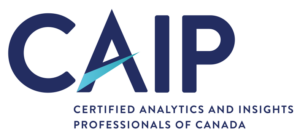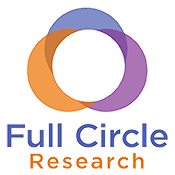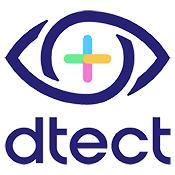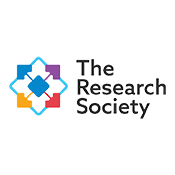Free webinars + stay connected
Access our most recent webinars with leading thinkers in the world of market research and stay informed about new courses and upcoming events by joining our mailing list.
About this course
What you’ll learn
Learn which analytic techniques to use with primary and secondary research data.
As more and more data primary and secondary research sources emerge in the “age of big data,” selecting appropriate advanced analysis techniques to extract insights is becoming increasingly essential to decision making. The first step is to understand the business question at hand. The second is to assess the data available for you to address the business question.
Certain analysis techniques are only appropriate with primary research data, whereas other analysis techniques are only appropriate with secondary data. Some techniques can be applied to either data source.
This foundational course will introduce you to the most common advanced analytical techniques in use today, with greater attention to techniques which are applied to secondary data. Examples are presented with each technique to demonstrate how insights can be extracted with the technique along with a conversation on what actions might be taken based on such insight. While statistical methods and terminology are discussed, explanations are purposely not detailed in order to help you focus on the overarching applied concepts behind each.

Learning objectives
After completing this course you should be able to:
- Describe a common framework that distinguishes between multivariate analytic techniques and helps guide the decision of what technique to use when, based on the following factors—dependence, interdependence, number of dependent variables, type of relationship, item being analyzed, nature of metric, and the nature of the business question being addressed.
- Compare and contrast the different patterns that express the relationship between two variables (e.g., nonlinear, linear, curvilinear, s-shaped, etc.).
- Distinguish between interpolation and extrapolation.
- Describe what Factor Analysis is, what it does, what type of input data is generally acceptable, and common applications in market research.
- Describe the concept of Segmentation Analysis, what it does, what type of input data is generally acceptable, various techniques on how one may cluster data (e.g., K-Means, RFM, Pareto, etc.) and common segmentation applications in market research.
- Describe what Perceptual Mapping (including the use of Multidimensional Scaling) is and common applications in market research.
- Describe the different techniques used to measure association (i.e., Correlation, Simple Regression, and Multiple Regression), what they do, what type of input data is generally acceptable, and common applications in market research.
- Describe Conjoint Analysis and Choice Modeling, what they do, what type of input data is generally acceptable, and common applications in market research.
- Describe more advanced measures of association (e.g., Logistical Regression and Structural Equation Modeling), what they do, what type of input data is generally acceptable, and common applications in market research.
- Describe what Discriminant Analysis is, what it does, what type of input data is generally acceptable, and common applications in market research.
- Identify the most popular machine learning techniques and describe how researchers can use them to generate insight.
- Describe what neural network analysis is, what it does, what type of input data is generally acceptable. Describe common applications in market research.
- Describe the concept of Marketing Mix Modeling, what it does, what type of input data is generally acceptable, techniques that are used (e.g., multiple regression, Bayesian regression, etc.) and common applications in market research.
- Describe Time Series Analysis, what it does, what type of input data is generally acceptable, what techniques are used, and common applications in market research.
- Describe the difference between statistical significance and business significance.
Who should attend?
- Entry-level researchers looking for a solid introduction to quantitative data analysis.
- Mid-level staff seeking to expand their skillset.
- Experienced researchers looking to catch up with the latest developments.
- Corporations seeking professional development options for their internal training portfolio.
- Suppliers seeking courses for new-employee onboarding.
- Researchers whose job involves leading or contributing to project design, particularly those around secondary data.
- Analysts needing to understand how best to analyze quantitative data, and the pitfalls to avoid.
- Client-side researchers responsible for designing research and ensuring that the analysis leads to reliable insights.
- People just entering the research field who want to understand this important aspect of the research process.
Continuing Education Information
Students successfully completing graded components earn a Digital Badge (Opens in a new window) and 1.2 University of Georgia Continuing Education Unit (Opens in a new window) (CEU) from The University of Georgia.
As a graduate of the course you will be recognized by industry associations, employers, peer groups and other professionals as understanding how to translate your research findings into reports and presentations that grab your audience’s attention, address the business decision your client needs to make, and offer sound and useful recommendations. This recognition will help you advance in your company and the industry.

CAIP Canada (Opens in a new window) also recommends the course for candidates looking to fill in the gaps or gain a refresher in specific areas.
Knowledge gained by this course
You should be familiar with:
- The differences, strengths and limitations between primary and secondary data sources.
- An elementary understanding and exposure to statistical analysis.
- The ability to detect outlier observations.
- How to frame business problems and suggestions around data which might assist in solving such problems.
These topics are covered in detail in two separate Principles Express courses. A more thorough overview of some of these techniques can be found in: Introduction to Data Analysis and Working with Secondary Data: Syndicated and Big Data.
Explore more foundational, topic-specific courses in our Principles Express series (Opens in a new window).
Requirements & policies
Schedule
Enroll at any time and complete the course’s required graded components within 30 days.
Fees & funding information
$359 – Standard Fee
$329 – Association Discount (Members* of: Insights Association; ESOMAR; Canadian Research Insights Council, The Research Society, Intellus Worldwide, QRCA, AMAI, WAPOR-Latinoamérica, MRII Board of Directors, UGA MMR Advisory Board.)
$50 – One-Month Extension (only one extension is granted per participant)
*Membership will be verified.
Prepayment is required to be registered. The prices listed are per person (US Funds).
Cancellation or Refund
We will issue a refund, minus a $100 processing fee, if you have not accessed the online course. All cancellation and refund requests must be sent via email to gc-student@uga.edu no later than seven (7) days after your course access information is issued.

Technology
Take advantage of the different features (PDF files, URLs/links to external websites, animated exercises, audio and video clips) you should use a browser such as Chrome (Opens in a new window), Firefox (Opens in a new window), Microsoft Edge (Opens in a new window), or Safari (Opens in a new window) and a fast internet connection provide the best experience. The online platform supports many popular web browser versions. To find out if your computer’s current software configuration is compatible, see System & Software Requirements (Opens in a new window).
Prerequisite
There are no prerequisites for enrolling in Advanced Analytic Techniques. However, the course assumes some knowledge of basic research design and quantitative research practices.
Textbooks
Suggested (not required)
Chakrapani, Chuck, Analytics for Customer Insights: A Non-Technical Introduction. ©2018. ISBN: 978-0-920219-52-2 (print version recommended) or ISBN 978-0-920219-52-2 (eBook).
Included in the online course are suggested reading assignments from the above textbook. These readings are not required content and will not be part of the testing for the course. The textbook suggestions are simply intended to add additional depth to your understanding of the topic.
People & organizations
Author
Ray Poynter – Managing Director, The Future Place and Founder, NewMR
Ray is the author of The Handbook of Mobile Market Research, The Handbook of Online and Social Media Research and the #IPASOCIALWORKS Guide to Measuring Not Counting. He is the founder of NewMR.org, editor of the ESOMAR book Answers to Contemporary Market Research Questions, and is the Managing Director of The Future Place, a UK-based consultancy, specializing in training.
Ray has spent the last 35 years at the intersection of innovation, technology, and Market Research, during which time Ray has held director level positions with Vision Critical, Virtual Surveys, The Research Business, Millward Brown, Sandpiper and IntelliQuest.

Supporting associations
Select the organization to visit their websites.
Founding Organizations:
Proud Corporate Sponsors of MRII
 (Opens in a new window)
(Opens in a new window) (Opens in a new window)
(Opens in a new window) (Opens in a new window)
(Opens in a new window) (Opens in a new window)
(Opens in a new window) (Opens in a new window)
(Opens in a new window) (Opens in a new window)
(Opens in a new window) (Opens in a new window)
(Opens in a new window) (Opens in a new window)
(Opens in a new window) (Opens in a new window)
(Opens in a new window) (Opens in a new window)
(Opens in a new window) (Opens in a new window)
(Opens in a new window) (Opens in a new window)
(Opens in a new window) (Opens in a new window)
(Opens in a new window) (Opens in a new window)
(Opens in a new window) (Opens in a new window)
(Opens in a new window) (Opens in a new window)
(Opens in a new window) (Opens in a new window)
(Opens in a new window) (Opens in a new window)
(Opens in a new window) (Opens in a new window)
(Opens in a new window)Supporting Organizations
Prices, course details, dates, and times are subject to change.
Contact us + FAQs
FAQs
View the most frequent questions asked by our learners
Financial and Military Assistance
Find out which programs are eligible for assistance
Accommodations
View our accommodation policy














